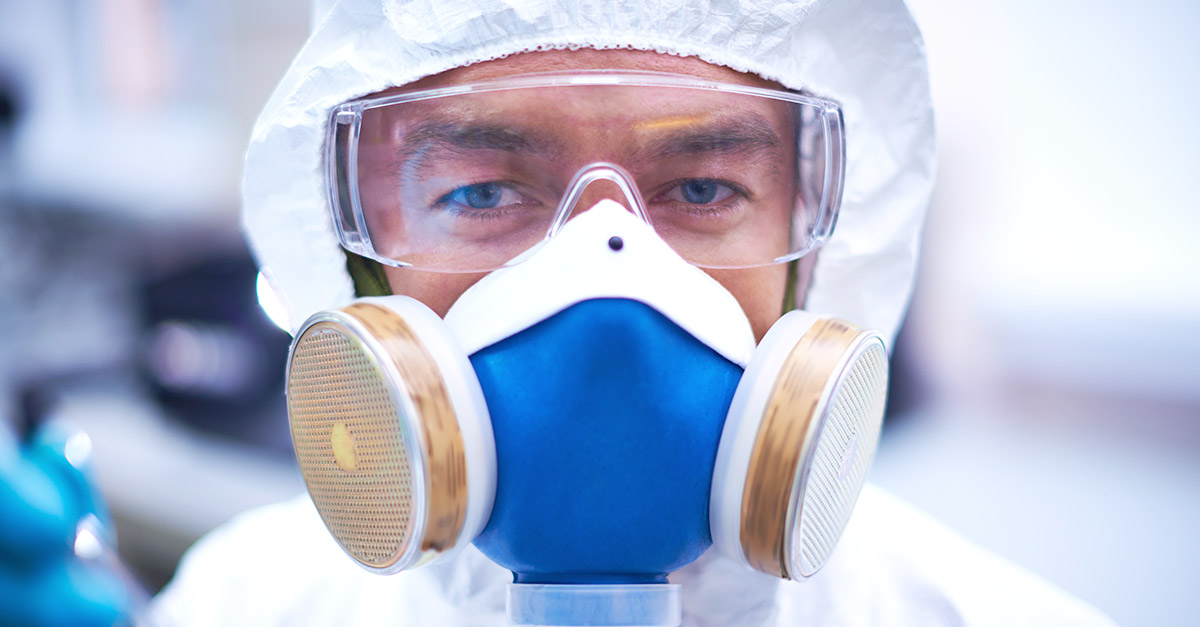Article contributed by Aftermath Services
Structural maintenance nightmares include a long list of unusual challenges. One high on this list is removing tear gas residue. Not only is it dangerous for the crew members involved, the complexity of completely removing gas residue makes it a near-daunting task.
First, the composition of tear gas is designed to disable humans. Though there are different types available, tear gas works by releasing an inhalant that infiltrates the mucous membranes causing people who come in contact with it to cough and tear up; it also creates a burning sensation on the skin. This reaction temporarily renders individuals from being able to fully function, which is designed to allow law enforcement officials to diffuse potentially dangerous situations. Just imagine how it affects cleaning crews.
Second, it’s a mess to remove from any structure. When tear gas is used, canisters are shot from launchers that heat the canisters prior to release to help disperse the gas more effectively. The particles are heavy so they settle eventually, but can move from powder to gas state under heat, which makes recontamination possible. In addition, to secure a site, law enforcement officials normally use several canisters within a structure—up to 100, in some cases.
While being extremely effective for subduing suspects, these factors can make tear gas remediation especially challenging. Unfortunately, there is no such thing as an easy tear gas remediation job. Yet if tear gas powder or residue is not completely eliminated from a structure, the irritating effects of the gas can linger, making the area uninhabitable and affecting property and business long after the gas is used.
An Action Plan
Prior to entering an affected area for assessment, one should first determine what type and how much tear gas was used. the two most common types are chlorobenzylidenemalononitrile (CN) or chloroacetophenone (CS). However, some jurisdictions may have older formulations—some of which are flammable. In these instances, tear gas residue removal methods that implement the use of heat are not recommended since the flammable fumes combined with the elevated temperature could lead to an explosion or fire.
After donning U.S. Occupational Safety and Health Administration (OSHA)-approved encapsulated suits and respirators, turn off the HVAC system, or in colder climates, significantly reduce temperature settings while keeping rooms warm enough to prevent water pipes from bursting.
Upon inspection, take photographs and determine:
- If any biological material, such as blood and other body fluids is present that could create a biohazard (If there are biohazards, those must first be remediated to prevent further damage from decomposition or viral exposure.)
- How much tear gas residue is present
- If any drywall was punctured by the canisters, leaving the interior wall studs exposed to residue
- If any dyes were incorporated into the gas, which will require additional cleaning measures.
Once initial assessment is complete, determine the best course of action for that particular situation. For example, discuss with the client or facility manager what property is salvageable and what is not. Then, establish a staging area—usually a garage or adjacent “clean” contained area in a commercial structure—where nonporous furniture and other items can be stored and cleaned before being returned to the structure.
Top to Bottom, Back to Front
Starting with the uppermost rooms, seal off each room and hallway with plastic sheeting. Cover any air vents to ensure that residue will not recontaminate an already-cleaned or uncontaminated room. If necessary, seal off larger rooms by half or quadrants to minimize cross-contamination, ideally working in no larger than 15-foot by 15-foot areas.
To begin the cleaning process, move all nonporous items to the staging area. Then, remove and dispose of all porous materials. This includes carpeting, padding, cloth furniture, draperies, electronic equipment, and other materials into which tear gas residue can penetrate; in most cases, porous materials cannot be cleaned completely of tear gas and should be disposed of properly. If the drywall was punctured by a canister, remove and dispose of both layers of drywall as well as insulation.
Next, vacuum all surfaces thoroughly with a HEPA vacuum to remove as much residue as possible. Follow this by spraying the affected area with a specially formulated cleaning agent for tear gas residue to help control particles from becoming airborne. Manually wipe down all surfaces, including porous surfaces such as flat painted walls or exposed wall studs, to remove the residue. Repeat these steps several times to assure all the residue is removed. Cleaners should also seal wood studs that have been exposed to the tear gas (i.e., the studs of the walls that were punctured with tear gas canisters) with a wood sealant to encapsulate the stud. This step will prevent the exposed studs from “off-gassing”—or re-releasing any tear gas residue into the structure after it has been cleaned.
When a room has been cleaned, seal it off with a new sheet of plastic sheeting over the doorway marked with an “X” to prevent other workers from entering this room until the entire structure has been cleaned.
Tear gas is a heavy particle and settles downward, so the workflow for remediation in a structure should be topmost affected floor first, working downward and repeating the procedure described from back rooms to front on each floor. This is assuming you are using the front door as the main access point; if not, work opposite the exit point starting with rooms furthest from the entrance/exit. Additionally, use only one exit to prevent workers from traveling through already-cleaned areas.
Even if there’s no visible tear gas in areas such as basements, air conditioning systems may have brought exposure into those areas so test and clean accordingly.
The “Sniff Test”
Unfortunately, there is no actual gas test or meter to determine if any residue exists. When all areas have been cleaned, determine if any residue is present by inspecting each room individually. If, upon entering a room, one feels the effects of tear gas residue, repeat the entire cleaning process to ensure that the area is safe for occupants. This “sniff test” inspection process should be repeated by different crew members separately for a qualitative agreement that the structure is free of tear gas residue.
When the remediation process is complete, a qualified HVAC company must clean the structure’s air ducts, or the remaining residue will be re-disbursed when the HVAC system is turned back on. This is a very important step, and should be planned for from the beginning by engaging a licensed HVAC specialist.
Generally, the biggest challenge in tear gas remediation is how to control cross-contamination, but every situation is different depending on the amount of tear gas used and the size of the structure as well as if any biohazard exists.
Remediation can take from four days to two weeks. An individual assessment of the proper remediation for a particular situation should always be conducted and performed in accordance with best practices and local, state, and federal regulations. It’s a meticulous process but the end result is a structure that is once again ready for humans to work or live.
Aftermath Services is a biohazard and trauma cleaning specialist company. This article was originally posted September 2013 and updated in 2020.



